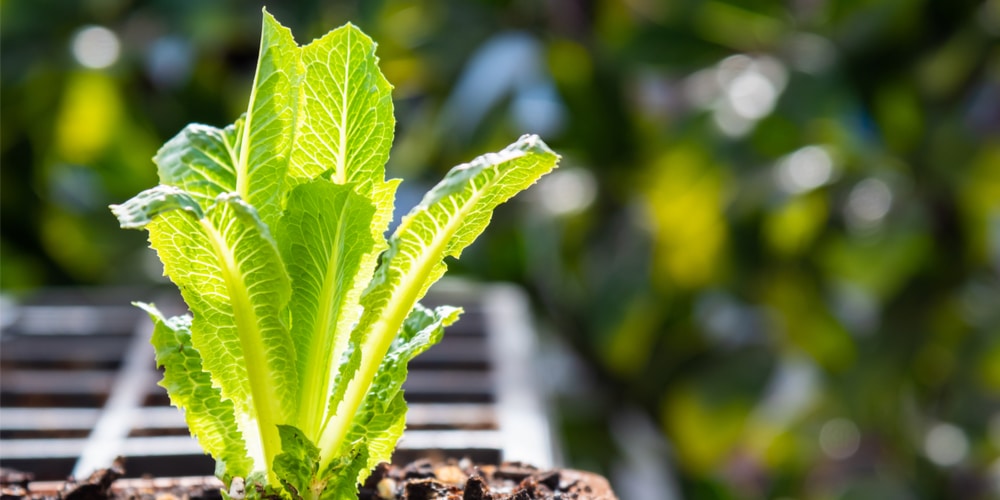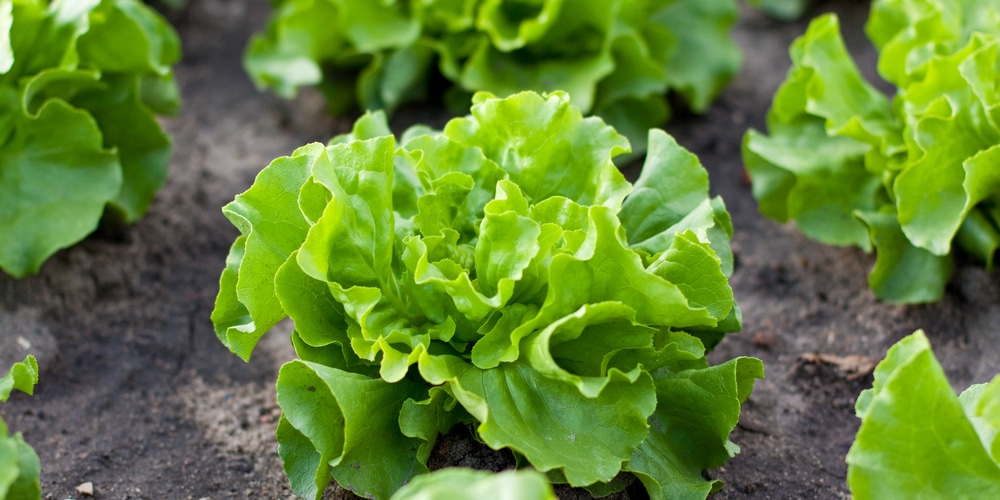Homegrown lettuce tastes excellent and is very healthy. Likely, the leafy, green lettuce leaves you harvest from your garden will be fresher and nicer than anything you can buy in the supermarket. But does lettuce need full sun? No, but it does require at least 6 hours of sunlight.
If you’ve recently started growing veg, you may be wondering, ‘does lettuce need full sun?’ While lettuces do need enough sun to grow, scorching heat and too much sun will cause them to wilt or bolt. So let’s look at how much sun lettuce needs. We’ll help you determine the best place in your yard to grow lettuce.
Does Lettuce Need Full Sun?
Lettuce shouldn’t be planted in full sun or in any conditions that are too hot. If you live in a hot state, it’s best not to plant lettuces in a greenhouse as this will be too hot. Overheating can cause wilting or make the lettuce bolt. It’s not the amount of sunlight the lettuce receives that’s important, but the intensity of the sunlight.
When lettuces bolt, they grow very quickly, go to seed and start to turn yellow. You can still eat lettuce that’s bolted, but it will be bitter and generally won’t taste very nice. Some people add lettuce that’s bolted to green smoothies as it’s still very healthy.
To thrive lettuce plants, need between six and seven hours of sunlight a day. The rest of the time, they should be in full or partial shade. When choosing a spot in your yard to grow lettuce, you’ll need to find an area that gets some shade daily. Your lettuces won’t grow well if they are in full sun. Prolonged shade and overcast weather are just as bad, which means it’s essential to plant your lettuces at the correct time of year, depending on the climate of the state you live in.
There are a couple of varieties of lettuce that grow well in sunnier and hotter conditions. “Green Star” and “Red Sails” do well with lots of sunlight, but they do also need some regular shade.
What happens if lettuce plants are overexposed to sunlight
As mentioned above, lettuce plants will bolt if they are grown in too much sunlight or very hot conditions. This is when a plant prematurely produces flowers and seeds and is a reaction to stress. The lettuce is attempting to produce seeds so that the plant can reproduce before it dies.
Lettuce that has bolted will grow upwards quickly and look very tall and spindly rather than growing a small leafy head. The plant will have flowers and only a few small, low-quality leaves.
Protecting Lettuce from Excessive Sunlight
To stop your lettuce plants from bolting, you need to ensure that they don’t receive too much direct sunlight. Once lettuce has started to produce flowers and seeds, there’s no way to reverse the process. It’s best to take steps to stop your lettuces from bolting in the first place. Here are some tips that will help you grow healthy, great-tasting lettuce:
Plant Lettuce Earlier in the Season
Lettuce is a cool-season crop, so the best way to stop it from bolting is to plant it at the beginning of the growing season.
The optimum temperature for growing lettuce is when the soil is between 60° and 65°F (16° to 18° C). However, lettuce seeds will germinate in temperatures of 40°F (4°C). It’s a good idea to plant your lettuce early, and by the time the weather gets sunnier and the temperature increases, your plants will have established themselves.
Utilize Shade Covers
It’s a good idea to invest in a shade cover that you can put over your lettuce plants and other cool-season vegetables during the hottest part of the day. Lettuces can wilt in the mid-day sun, so if possible, use a shade cover to protect them from excessive sunlight.
Shade covers are beneficial as they will protect your plants from the sun’s UV rays but allow air and water to pass through. They will also stop your lettuces and other plants from bolting. Shade covers can also help protect your lettuces from strong winds and may even deter pests such as rodents or insects that want to chew on your lettuce.
Shade cloths come in varying intensities to provide different amounts of shade to plants. Some shade cloths will only provide plants with 10% shade, while others cut out 90% of the sun. If you’re growing lettuce, a shade cloth that provides anywhere from thirty to 50% works well.
Plant Heat Resistant Varieties
Some lettuce varieties are naturally resistant to heat and sunshine. Lettuce is available in four main types; Leaf, crisphead, bibb, and Romaine. It also comes down to personal preferences which kind of lettuce you choose to grow. Each of the above four types of lettuce has a few different strains of seed that are more sun and heat tolerant.
- Crisphead– If you enjoy crisphead lettuce and live in a hotter climate, it may be a wise idea to plant either sierra Batavian, Michelle, or Nevada varieties.
- Romaine– Romaine lettuce is a very popular choice worldwide as it’s crisp and green. The best varieties to grow in a sunny location include Coastal Stars, Little Gem, Anuenue, and Jericho.
- Bibb– Lovers of bibb lettuce should look out for buttercrunch or summer bibb. As the name suggests, summer bibb can be grown in the hotter summer months, as it’s more heat resistant than other varieties.
- Leaf– And finally, if you want to grow a variety of leaf lettuce, the best ones to choose for a hot, sunny climate are Green Star, Black Seeded Simpson, or Bronze Arrow Lose Leaf.
Conclusion
Lettuces require between six and seven hours of sunshine a day but also require partial shade. Growing lettuce in too hot an area will cause the plants to bolt. It’s essential to plant your lettuce seeds at the beginning of the growing season, so they can establish themselves before the weather gets too hot. Also, use a shade cloth if your yard is in full sun, as this will protect your lettuce plants from the sun UV rays. You can also try growing heat-tolerant varieties of lettuce as they do better in a sunny climate.


